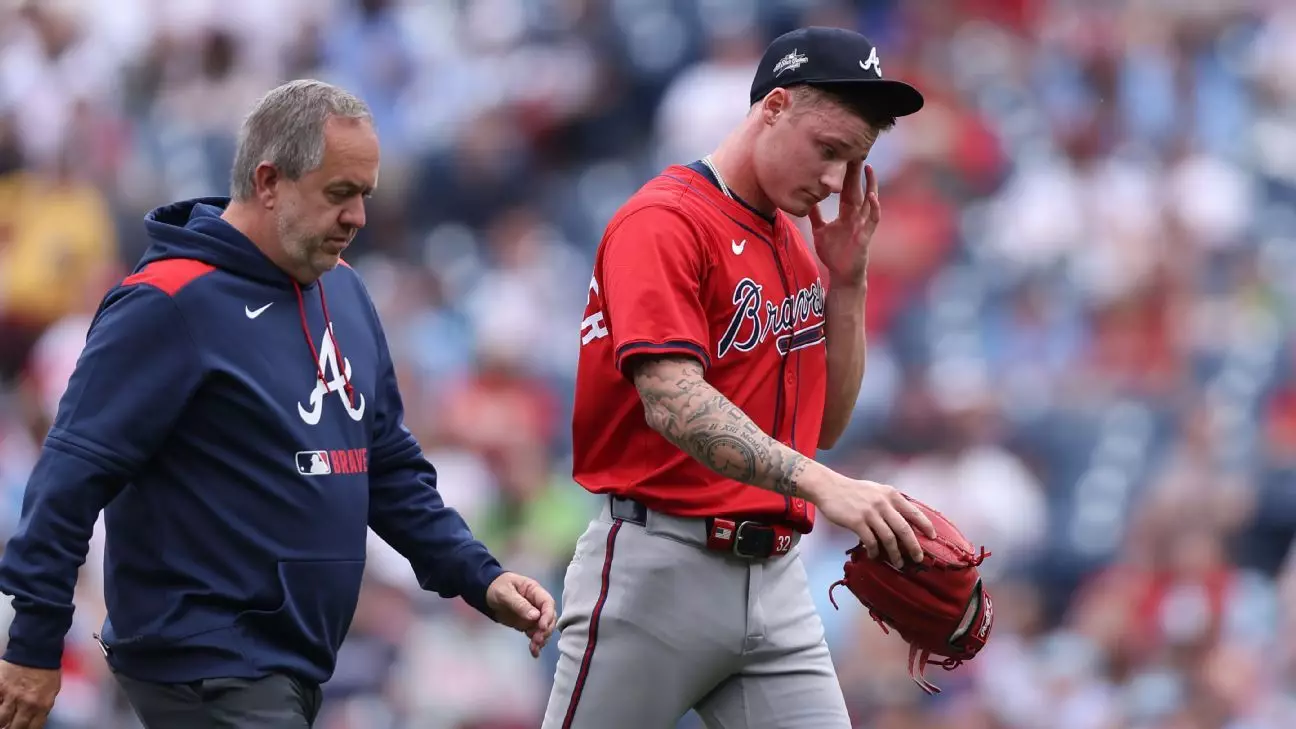The realm of professional sports is unforgiving, a truth that was all too palpable for the Atlanta Braves recently. The organization saw two significant events unfold, bringing both a spotlight on their future prospects and a glimpse into the harsh reality of competitive athletics. Rookie AJ Smith-Shawver underwent Tommy John surgery, a procedure that salvages careers for many injured pitchers but also signifies a lengthy rehabilitation process. This season, Smith-Shawver’s promise was evident—his strikeout ratio was impressive, and he exhibited the poise of a seasoned player on the mound. However, following the revelation of a torn ulnar collateral ligament, his immediate future looks bleak, overshadowed by the inevitable grueling months of recovery to come.
Manager Brian Snitker’s optimism shines a flickering light through this dark cloud, highlighting the intrinsic resilience needed in sports. “This is just a little setback,” he remarked, foreshadowing a hopeful trajectory for Smith-Shawver’s career. The surgery, conducted by renowned surgeon Keith Meister, now paves the way for the young right-hander to embark on a challenging rehab journey. He is still young, and many greats have traversed this tumultuous path before him; it’s a road that requires patience, tenacity, and an unwavering belief in the potential for a comeback.
Kimbrel’s Decisive Departure: A Legacy Under Scrutiny
In a separate but equally compelling narrative, Craig Kimbrel’s decision to elect free agency encapsulates the volatility and unpredictability actors face in sports. Once a beacon of pitching excellence, Kimbrel’s time with the Braves—where he garnered a remarkable 186 saves—is indelibly marked by glory. But the echoes of past brilliance do little to aid an athlete growing weary of the rigors of performance. After being designated for assignment and failing to make a significant impact upon his brief return, the 37-year-old seems intent on reclaiming the flame that once set him apart as a dominant force in the league.
Kimbrel’s situation serves as a poignant reminder of the precarious nature of athletic careers. His attempt to rekindle his former glory in Atlanta speaks volumes about the weight of nostalgia in sports—a longing to belong and to recreate former triumphs. Yet, as the landscape of baseball shifts, one must ask: is Kimbrel’s era drawing to a close, or is there a flicker of hope for reinvention?
A Time for Reflection and Renewal
The simultaneous events surrounding Smith-Shawver and Kimbrel provide fertile ground for discussion around the different paths elite athletes must navigate. There is an unsettling dichotomy between the hope imbued in youth and the shadows cast by receding careers. For Smith-Shawver, this moment is a test of character and durability, an opportunity to rise from adversity more robust than before. Conversely, Kimbrel’s decision to take his career into his own hands signals an enduring pursuit of identity within a sport that can easily render previous accolades obsolete.
As the Braves maneuver through these challenges, it invites a larger conversation about the nature of success, rebirth, and the hopes pinned on young talent amidst the swirling uncertainties of professional athletics. In the face of adversity, the Atlanta Braves are more than just a baseball team; they become a narrative tapestry of ambition, resilience, and the quest for continuity even when the game plays hardball.


Leave a Reply